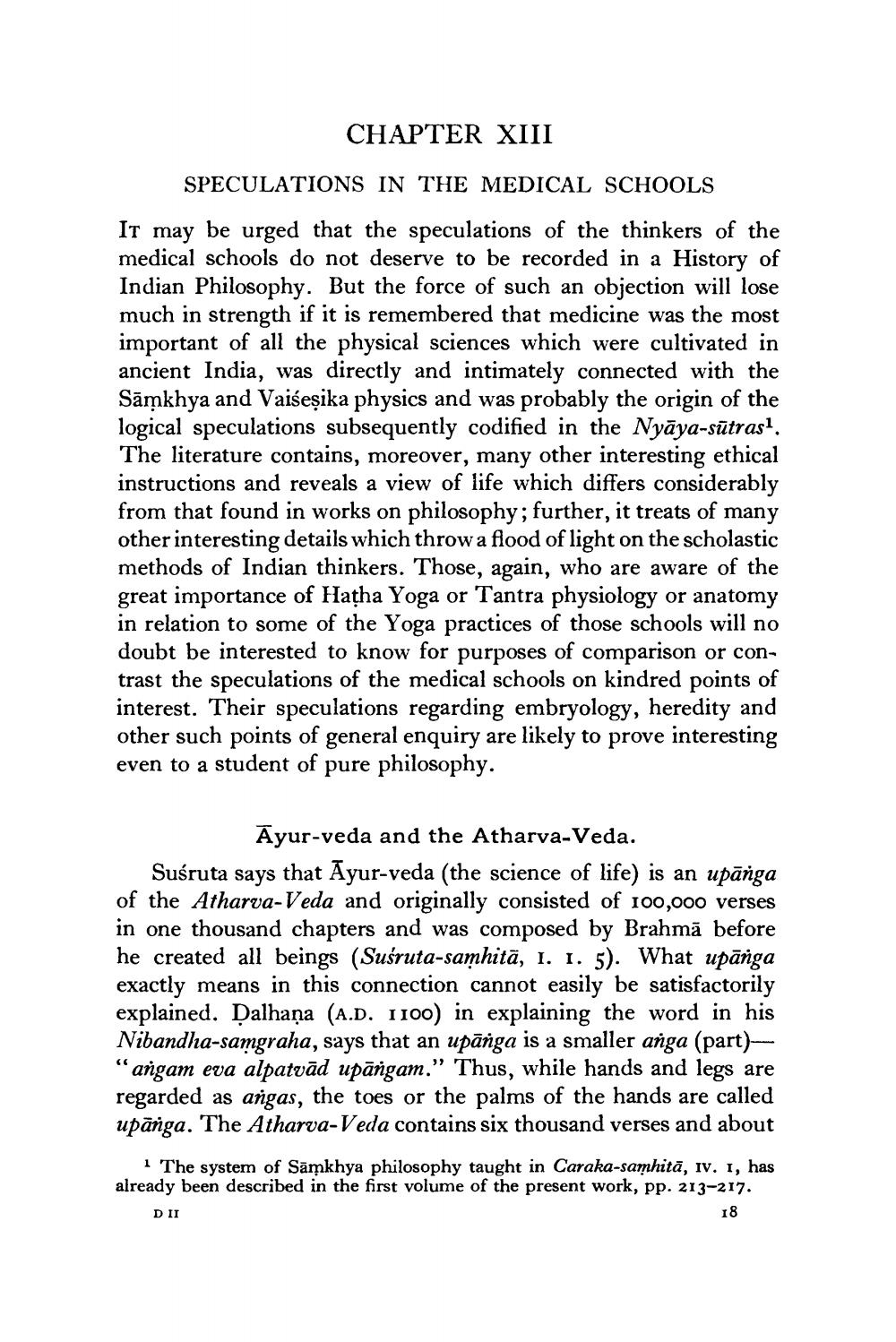________________
CHAPTER XIII
SPECULATIONS IN THE MEDICAL SCHOOLS
IT
may be urged that the speculations of the thinkers of the medical schools do not deserve to be recorded in a History of Indian Philosophy. But the force of such an objection will lose much in strength if it is remembered that medicine was the most important of all the physical sciences which were cultivated in ancient India, was directly and intimately connected with the Samkhya and Vaiseṣika physics and was probably the origin of the logical speculations subsequently codified in the Nyāya-sūtras1. The literature contains, moreover, many other interesting ethical instructions and reveals a view of life which differs considerably from that found in works on philosophy; further, it treats of many other interesting details which throw a flood of light on the scholastic methods of Indian thinkers. Those, again, who are aware of the great importance of Hatha Yoga or Tantra physiology or anatomy in relation to some of the Yoga practices of those schools will no doubt be interested to know for purposes of comparison or contrast the speculations of the medical schools on kindred points of interest. Their speculations regarding embryology, heredity and other such points of general enquiry are likely to prove interesting even to a student of pure philosophy.
Ayur-veda and the Atharva-Veda.
Suśruta says that Ayur-veda (the science of life) is an upānga of the Atharva-Veda and originally consisted of 100,000 verses in one thousand chapters and was composed by Brahma before he created all beings (Suśruta-samhitā, 1. 1. 5). What upanga exactly means in this connection cannot easily be satisfactorily explained. Dalhana (A.D. 1100) in explaining the word in his Nibandha-samgraha, says that an upānga is a smaller anga (part)—
angam eva alpatvād upāngam." Thus, while hands and legs are regarded as angas, the toes or the palms of the hands are called upanga. The Atharva-Veda contains six thousand verses and about
1 The system of Samkhya philosophy taught in Caraka-samhitā, IV. I, has already been described in the first volume of the present work, pp. 213-217.
D II
18




